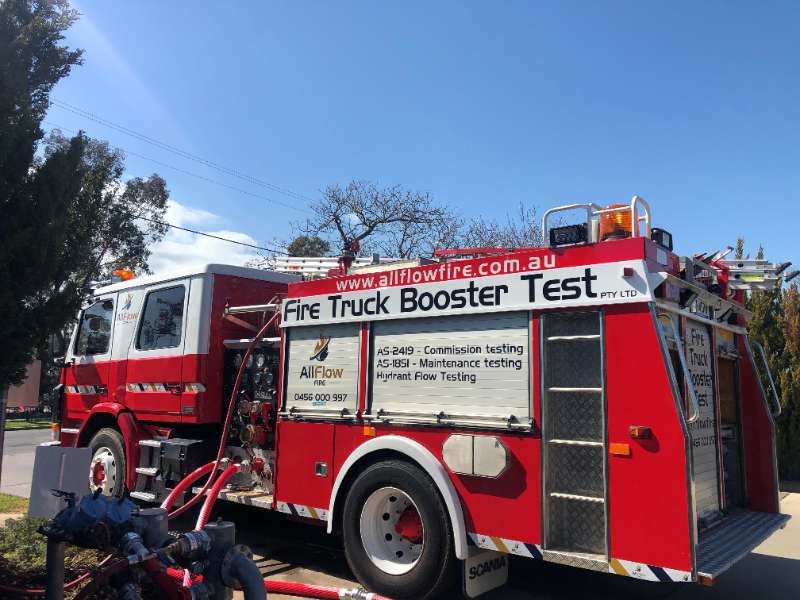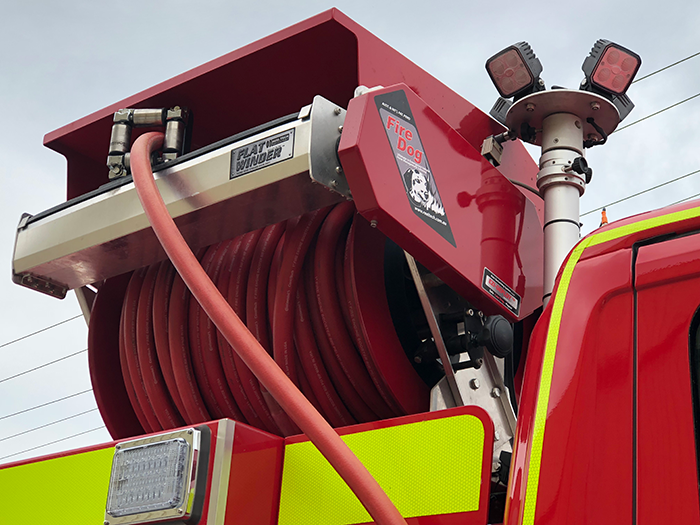A Comprehensive Overview Regarding Fire Hydrant Inspection & Upkeep:
Fire hydrants play a crucial function in securing lives and also property throughout fire emergencies. Regular inspection as well as upkeep of fire hydrants are essential to guarantee their optimum functionality. In this guide, we will certainly give you with in-depth steps and also guidelines for evaluating as well as maintaining fire hydrants. From recognizing the elements of a fire hydrant to doing routine inspections and also attending to typical problems, this write-up will outfit you with the expertise to maintain fire hydrants in top-notch condition.
Fire hydrants are necessary fixtures made use of by firefighters to gain access to water for fire suppression objectives. They consist of numerous parts, consisting of the primary shutoff, operating nut, drainpipe shutoff, as well as hydrant body. Understanding the composition of a fire hydrant is crucial for efficient inspection and maintenance.
Significance of Normal Inspection as well as Upkeep
Normal inspection as well as maintenance are crucial to ensure fire hydrants remain in proper functioning order when emergency situations happen. Ignoring upkeep can lead to lowered water flow, shutoff breakdowns, and other problems that may impede firefighting initiatives. By adhering to a regular inspection and maintenance schedule, you can proactively determine and deal with any type of problems that may arise.
Fire Hydrant Inspection
Doing extensive inspections is essential to determining possible troubles and also making certain the functional preparedness of fire hydrants. Follow these steps for a comprehensive fire hydrant inspection:
Pre-Inspection Preparation
Before starting the inspection, ensure you have the needed devices as well as security tools. This may consist of a wrench, stress gauge, lubricant, and proper personal protective tools (PPE). It's important to focus on safety and security during the inspection process.
Visual Inspection
Begin the inspection by performing a visual assessment of the fire hydrant. Try to find any type of noticeable indicators of damages, deterioration, or leakages. Check the surrounding area for blockages that may restrain gain access to throughout an emergency. Look for any kind of indicators of meddling or criminal damage, such as broken locks or indicators of break-in. Note any kind of observed issues for further investigation and activity.
Running Nut and Cap Inspection
Next, concentrate on the operating nut and cap. Look for any kind of indicators of damage or wear. Ensure they are correctly secured and simple to eliminate. The operating nut must turn smoothly with no extreme resistance or grinding sounds. Lube the operating nut threads with an appropriate lube to ensure smooth procedure. Routine lubrication helps protect against corrosion and also rust, ensuring the nut remains easy to turn.
Key Valve Inspection
The major shutoff is an important component of the fire hydrant. Check it for any leaks or indications of deterioration. Try to find water seepage or corrosion around the valve body. Open and also close the shutoff to ensure it runs smoothly. Observe if the valve completely shuts with no recurring leaks. Keep in mind any type of difficulties or irregularities come across during this procedure, such as extreme pressure called for to run the shutoff or the valve getting stuck in the open or closed position.
Water Drainage System Inspection
The water drainage system of a fire hydrant plays a vital duty in avoiding water buildup and also freeze damage throughout cold weather. Check the drain valve for proper capability. Ensure it opens completely as well as closes firmly. Test the drainpipe shutoff by opening it briefly to release any kind of built up water. Look for any type of leakages or indicators of clog in the drain system. If you see any concerns, such as insufficient drainage or leakages, consider getting in touch with an expert to resolve the trouble quickly.
Circulation Testing
Routine flow testing is essential to assess the water circulation from the fire hydrant. This test aids figure out if the hydrant can delivering the required flow prices for firefighting objectives. Performing a circulation test calls for specialized devices as well as proficiency. It is advised to include specialist examiners or the regional fire department to execute this examination properly. They will measure the circulation rate and pressure of the hydrant to guarantee it fulfills the called for criteria.
Fire Hydrant Upkeep
Regular upkeep is important to keep fire hydrants in ideal condition. Right here are vital maintenance jobs that must be done:
Clearing Debris as well as Obstructions

Frequently examine as well as remove the location around the fire hydrant to get rid of any debris or blockages that may hinder its accessibility throughout an emergency. Make sure that there are no overgrown plants, trash, or any kind of various other objects obstructing the hydrant. Trim greenery in the vicinity to offer very easy visibility and accessibility for firemens.
Lubrication of Moving Components
Using lubricating substance to the relocating parts of the fire hydrant assists guarantee smooth operation and prevents rust. It is advised to lubricate the operating nut, main valve, and also various other relocating parts a minimum of annually or according to producer's suggestions. Utilize a lubricant specifically designed for fire hydrants and also adhere to the guidelines provided.
Repairing or Changing Broken Elements
If throughout the inspection or routine upkeep you find any kind of broken or malfunctioning parts, it is essential to address them promptly. Change worn-out or broken parts to bring back the performance of the fire hydrant. This may include changing harmed gaskets, seals, bolts, or even the primary valve. Always utilize premium replacement parts that adhere to the producer's specs.
Painting as well as Marking
Regularly inspect the paint and markings on the fire hydrant. Gradually, weather conditions and basic wear and tear can cause the paint to fade or chip. Retouch any kind of discolored or damaged paint using a fire hydrant-approved paint that adheres to the manufacturer's guidelines. In addition, make sure that the fire hydrant is correctly labeled and marked with the required info, such as its operating stress as well as circulation ability. Clear as well as noticeable markings aid firemans find as well as make use of the hydrant effectively throughout emergency situations.
Usual Fire Hydrant Issues and Troubleshooting
Understanding common concerns that can occur with fire hydrants allows you to troubleshoot and address them quickly. Right here are some typical troubles as well as their potential options:
Leakages and Water Infiltration

Leaks or water infiltration around the hydrant may suggest malfunctioning gaskets, harmed valves, or worn-out seals. Check as well as repair or change the impacted parts as essential.
Stuck or Difficult-to-Operate Valves
Shutoffs that are stuck or difficult to run might be triggered by particles build-up or rust. Completely tidy the valve and also apply lube to recover smooth operation.
Damage to Hydrant Elements
Damages to hydrant parts, such as a busted operating nut or harmed primary shutoff, can hinder the functionality of the hydrant. Change the damaged parts to make sure proper procedure.
Poor Water Flow
Inadequate water circulation from the hydrant can be caused by obstructions, valve malfunctions, or inadequate water stress. Explore the concern and also take appropriate steps to restore the called for circulation.
Often Asked Concerns
How often should fire hydrants be checked?
Fire hydrants need to be checked at the very least yearly. Nevertheless, in areas with severe environmental problems or high fire danger, more frequent inspections may be required.
Can I carry out fire hydrant inspections myself?
While standard aesthetic inspections can be done by experienced individuals, it is suggested to entail professional examiners for more comprehensive analyses and circulation testing.
What should I do if I discover a damaged fire hydrant?
If you come across a damaged fire hydrant, report it to the ideal authorities or the regional fire department immediately. Do not attempt to fix or change the hydrant yourself.
Why is water flow testing boost flow testing crucial?
Water flow testing guarantees that fire hydrants can offer the required flow rates for firefighting procedures. It aids determine any type of obstructions or problems that might restrain water distribution.
Final thought:
Regular inspection and also upkeep are vital for the reliable operation of fire hydrants. By adhering to the steps described in this overview and promptly attending to any issues, you can make certain that fire hydrants are ready to serve their essential role in shielding lives and home during fire emergencies. Keep in mind, a properly maintained fire hydrant can make a significant difference in mitigating the influence of fires and safeguarding areas.